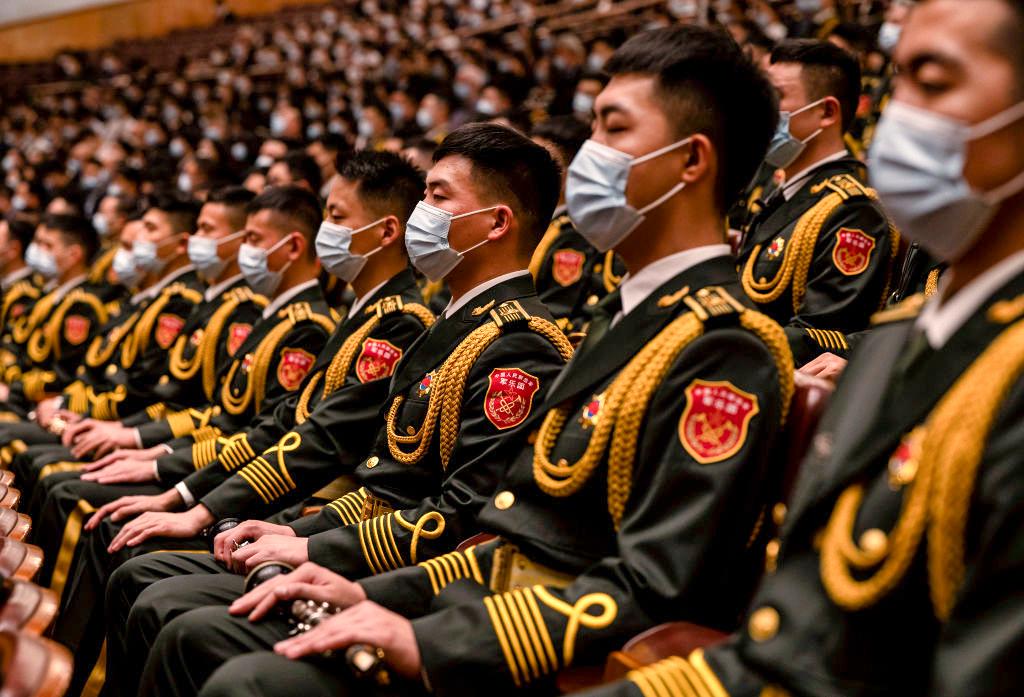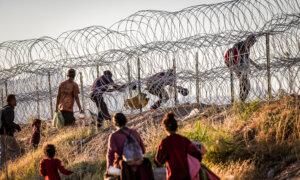Xi Jinping’s military reform faced a significant setback, causing dissension throughout the ranks. The recent disbandment of the Strategic Support Force by the Chinese Communist Party (CCP), followed by the establishment of the Information Support Force on April 19, marks a pivotal moment in this ongoing restructuring. Reports indicate that a large-scale purge within the military is still underway, with arrests extending beyond the Rocket Force and the Strategic Support Force to officers from other branches.
China’s Military Preparedness Questioned
Former People’s Liberation Army (PLA) Navy Lieutenant Col. Yao Cheng, said on the “Pinnacle View” program that “the military reform in 2015 was a failure.”“Its prominent flaw was evident in the newly established Strategic Support Force, which haphazardly combined various elements, resulting in poor management and command coordination. Moreover, there were significant overlaps in operations, particularly in sorting out the relationships within the intelligence department.” He said.
“The Russian-Ukraine War served as a wake-up call for the CCP, and they realized that the military reform in 2015 was highly inadequate, leading to a deeper reform effort in 2022. This resulted in the dissolution of the Strategic Support Force and the establishment of four new branches, including the Information Support Force, the Military Aerospace Force, the Cyber Space Force, and the Joint Logistics Support Force. Additionally, the Rocket Force is undergoing changes, with plans to transform it into a Strategic Rocket Force focusing on strategic missiles, including medium and long-range missiles. Short-range missiles not classified as strategic are being distributed among various branches.”
Mr. Yao remarked, “There’s a significant trend happening now. Speculation abounded regarding Xi’s intentions, with some suggesting a shift towards implementing a presidential system. Since Xi took office at the 18th National Congress, he abolished term limits for the top leader and was re-elected at the 20th Congress. The extent of his next steps remains unclear, but the major changes occurring in the military indicate that Xi’s focus is on military development.”
Mr. Yao highlights a departure from past practices, noting the absence of expanded Central Military Commission (CMC) meetings under Xi. The expanded meetings of the CMC included personnel from various branches and departments besides the army, and it had been an important step adopted by the CMC since 1954 to collect opinions from different branches before they made decisions on major issues.
“After Xi took office, he never held an expanded meeting of the CMC, not even for such significant moves as the military reform. This centralized decision-making has coincided with an intensified anti-corruption campaign within the military, leading to apprehension and dissent among its ranks.” Mr. Yao said.
“What’s more important is the military’s change in role in serving the CCP rather than the people, as evidenced by recent changes in military oaths. This has caused significant backlash within the military.”
“Despite these reforms,” he continued, “the CCP’s military is unlikely to be able to wage a large-scale war, and the CMC is well aware of this. Shifts in strategic direction from winning local wars under high-tech conditions to active defense indicate limitations in the PLA’s capabilities.”
Foreign Forces Align in Support of Taiwan
The U.S., Philippines, Japan, and France are bolstering their alliance through joint exercises extending into the Bashi Channel, marking a notable shift in regional dynamics.Independent TV producer Li Jun said on “Pinnacle View” that recent military maneuvers conducted by the U.S. and Philippines, including the annual Shoulder-to-Shoulder Exercise, unveil significant departures from past routines.
He said, “One significant change is the inclusion of the Philippine Coast Guard for the first time, reflecting heightened tensions in the South China Sea. Given previous clashes with Chinese coast guard vessels, their integration into joint exercises clearly signals deterrence against Chinese assertiveness.
“Another noteworthy development is the inaugural participation of the French military. This marks a departure from past practices and underscores evolving European attitudes toward the stability of the South China Sea region.
“Moreover, while past exercises typically centered around the South China Sea, this year’s maneuvers near the Bashi Channel signal a deliberate engagement with Taiwan Strait issues, amplifying regional strategic concerns.”
Li Jun spoke of the escalating nature of recent U.S.-Philippines military cooperation, with a growing focus on Taiwan Strait and South China Sea matters. “The formation of a joint offensive and defensive posture by the U.S., Philippines, and Japan against China is increasingly evident.
A New Cold War Emerges
Guo Jun, editor-in-chief of The Epoch Times’ Hong Kong edition, said on “Pinnacle View” that “the bolstered military alliance between the U.S. and Japan poses a significant challenge for the CCP. Prime Minister Fumio Kishida’s recent visit to Washington and his address to Congress underscored Japan’s unwavering commitment to upholding the current international order alongside the U.S. Future collaborations between the U.S. and Japan, spanning space technology, sixth-generation fighters, and advanced military technologies, further solidify their partnership. Additionally, strengthened cooperation among the U.S., Japan, South Korea, and the Philippines signals a united front against China in the Asia-Pacific region.”She mentioned, “Experts in high-tech sectors within the U.S. noted a widening gap between China and the U.S., particularly in recent years. While China boasts significant military strength and manufacturing capacity, its intelligence and information technology integration shortcomings are apparent. The pivotal role of high technology in shaping future military dominance suggests that China’s inability to break through in semiconductor hardware may hinder its ability to confront the United States effectively.”
Ms. Guo believes two distinct global camps are formed, with the U.S. openly addressing China as part of an “evil axis.” “While not fully crystallized, these camps are rapidly coalescing, fueled partly by increased cooperation between Europe and the U.S. following the Russia-Ukraine conflict. China’s strategy of securing key allies such as Japan, Australia, Canada, and potentially Europe appears to be faltering, with Japan fully aligning with the U.S. and other Commonwealth members gravitating towards American interests.”
She continued, “Despite China’s hopes of retaining European support, divisions within the European Union complicate its strategy. While some major European powers seek to maintain a level of cooperation with China, the Ukraine crisis has heightened Europe’s sense of vulnerability, potentially shifting its stance towards aligning with the US.”
Ms. Guo said, “Blinken’s recent discussions during his visit to China, particularly concerning China’s potential assistance to Russia’s militarization, indicate new measures by the U.S. to counterbalance China’s influence. Against the backdrop of the Ukraine conflict, the alignment of these major camps suggests the emergence of a new Cold War, characterized by heightened tensions yet falling short of the global conflagration of World War II.”






